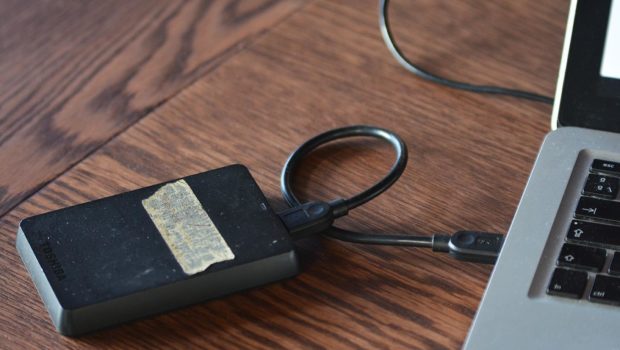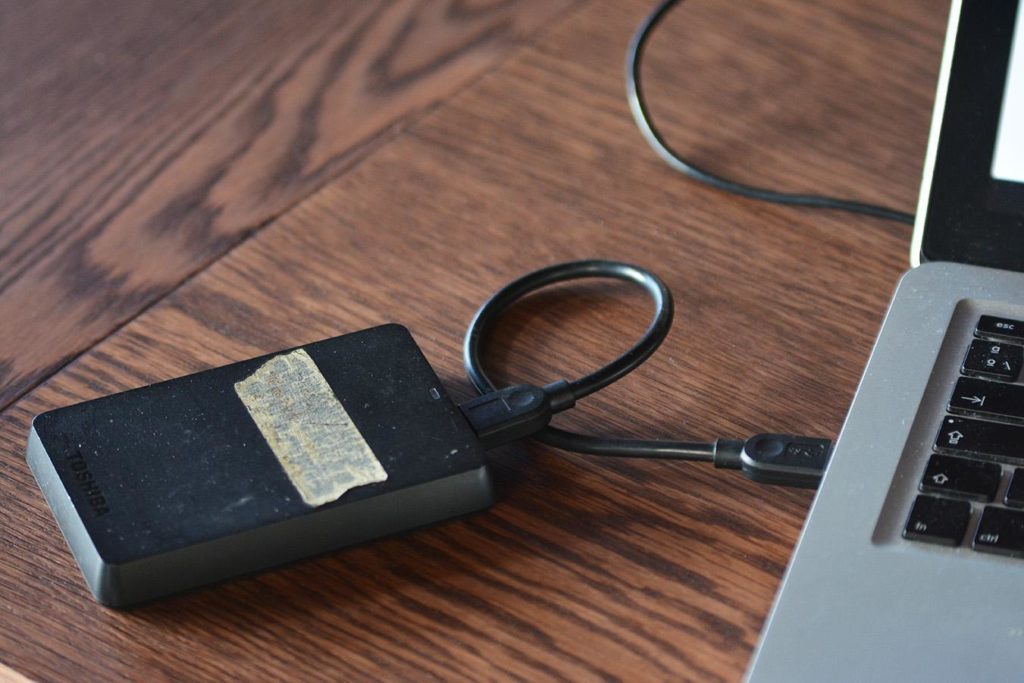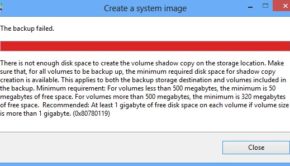Prevention is Better Than Cure – The Basics of Data Backup and Recovery
A few weeks ago I spent an evening at my desk editing photos from a wedding I had recently photographed. After about 4 hours of sitting upright, tiredness kicked in.
I decided to take my laptop and portable external hard drive to bed with me, where I planned to continue editing until I feel asleep.
As usual, I left the small hard drive plugged into a USB port and balanced it on top of the laptop as I walked to my bedroom. This time however, as I entered the door the hard drive cable got hooked on the doorknob and sent the drive crashing to the floor.
Photo credit: www.joelduncanphotography.com
My world literally froze for a few seconds as I struggled to process what had just happened. As I reached down for the drive, I got that sick feeling in my stomach, the one we all get when we know something is wrong but we’re still not sure just how bad it is.
I quickly plugged it back into my computer and waited for the little icon to pop up on my desktop to let me know it was connected. However, as feared – nothing happened.
Being a hands on, do it myself type of guy, I kept trying, unplugging and connecting the drive about 15 times hoping that it would somehow start working – still nothing.
I then downloaded a free data recovery software, read the instructions and ran it from computer with the external drive plugged in – still nothing.
I cannot explain the level of stress and frustration that I experienced as I came to the realization that my hard drive would not turn on. I had no choice but to contact a data recovery specialist.
Do – Expect The Unexpected
We all experience the tragedy of data loss at some point in time. If you haven’t, then you’re among the fortunate few. With that being said, your luck can change in the blink of an eye, as it did in my case. For you, it might not happen in such a dramatic way as it did for me, but regardless of how it happens, it’s better to be prepared for when it does.
Whether your laptop’s hard drive gives out, your USB stick refuses to be read, or your portable hard drive goes crashing to the floor, failures happen. When they do, you’ll have to decide just how much your data is worth.
Two Types of Failure and Data Loss
Logical Failures – Unexplained Drive Failure
A logical failure occurs when your computer’s BIOS can see your hard drive but it cannot navigate, find and access the data. When logical failures occur, your drive’s electronic and mechanical components all function correctly, but an error occurs due to a corrupt file system or accidental formatting.
The good news is that almost all logical disk failures can be remedied without having to physically open the hard drive. The important thing is to understand exactly why the logical failure occurred. Misdiagnosing the failure and attempting to repair the drive based on this diagnosis can result in irreparable damage to your data.
Mechanical Failures and Physical Damage
As the name implies, a mechanical failure occurs when your drive cannot be accessed due to a malfunction in it’s electronic or mechanical system.
These failures also prevent your computer’s BIOS and/or operating system from recognizing your drive. They can also result in strange clicking and grinding noises coming from the drive.
If you hear these noises coming from your computer, power off and DO NOT attempt to use it until it is checked by a professional data recovery center. Attempting to access your hard drive’s data when there is a serious mechanical failure can result in complete and permanent data loss.
To recover your data from a physically damaged drive, you either need to have it repaired or completely replaced.
DO NOT open the outer shell of a hard drive if you are not a properly trained specialist. Hard drives are made and repaired in clean, controlled environments called clean rooms. Opening them elsewhere can result in contamination of the magnetic media.
If you detect that there maybe physical damage in your drive, DO NOT attempt to run data recovery software. This software is only for logical failures like deleted data, partitions or bad formatting. Installing and running software on a physically damaged drive can also lead to permanent data damage or loss.
Accidentally Deleting Files
Perhaps the most common and easiest way to lose data is by mistakenly deleting a file or folder. We’ve all done this at some point, but normally we quickly retrieve the deleted file from the trash can. Unless of course we empty the trash and lose the file forever.
But is the file really lost forever?
The answer is no. When we delete a file, it isn’t necessarily completely gone from the drive – at least not instantly. In basic terms, the computer makes the space where the file was available for use. Until the space is used by other data, the information from the deleted file still exists.
However, when the drive stores other data in the free spot, the file will be deleted.
For that reason, immediately after deleting a file is the best time to try to recover it. The best course of action when you mistakenly delete a file is – DO NOT use the computer until you try a recovery.
In this case a free data recovery software can be a viable option. However, if you decide to use a data recovery software, DO NOT install it on the same drive where your deleted file was stored.
An Ounce of Prevention is Better Than A Pound Cure
This age old adage sums up a sound strategy for data recovery. It’s better to prevent the loss of data than dealing with recovery due to an unexpected hard drive failure. Data backup is far less costly than data recovery.
The recommended strategy for individuals and businesses alike is to understand and implement the best data storage solutions to ensure successful backup and recovery in the case of an unexpected event.
A good starting point is to carefully consider your current and potential data storage needs. As your reliance on data increases, backing up becomes even more important and potentially more complex.
Also consider what’s at stake if you were to experience a crash or data loss. What is the monetary and/or intrinsic value of all your data? For example, if a wedding photographer were to lose all of the photos from a wedding, it would have several devastatingly negative implications that go far beyond just the monetary loss. A wedding is a one time event and the photos have invaluable emotional value to the couple and their family.
DO – BACK UP REGULARLY
Taking an ounce of prevention would be to invest in additional backup drives or technologies since in the long run it is much cheaper than paying for data recovery. Not to mention way less stressful if you aren’t a very technical person or you don’t have a technical staff at your disposal.
Naturally, the backup technology you choose will depend greatly on the size and nature of your your data usage. However, the key is to store your valuable data on a secondary drive, whether it’s an external drive, a NAS (Network Attached Storage) Server, a rewriteable disc, or a cloud/online storage service.
Fortunately, the cost of data storage has decreased significantly in recent years. Storage devices are becoming more compact and offer more storage capacity than ever before. However, as their capacity increases and prices fall, the demand and cost for data recovery services keep climbing.
Regardless of the system you choose, it is critical that your files are copied and backed up regularly. Good backup software allows you to schedule the frequency of your scans. The scans can be monthly, weekly, daily or even continuously as files are changed or added to the drive.
Both Windows and Mac OS have free backup software available. Mac’s Time Machine which allows backups to external hard drives can protect users against complete system crashes and offers the option to backup regularly enough to protect against smaller mishaps like accidental file deletion.
DO an Online or Cloud Backup
It is highly recommended to keep all of your data backed up using an online backup service. This is also known as cloud backup.
The advantage of a cloud backup is that your information is kept on a server outside of your computer’s physical location. Even if you are responsible and you regularly backup your drives, having a copy off-site can be critical. Take for example cases of theft and unforeseen disasters like fires, floods, earthquakes and other natural phenomenon that you can’t predict. If your backups are kept in the same location as your main drive, you are still at the risk of losing everything.
The online backup services will require you to install software which runs checks on your computer for files you designate for backup, encrypts them for security, and sends them to the cloud servers. In the case of a disaster, you can access the server to recover copies of your files. Backups can be done on a fixed schedule or continuously throughout the day. Note that continuous backups can affect your computer’s performance and processing speed.
In general, online backup services are subscription based, meaning you will be charged at regular time intervals. If you stop paying, your backup service can expire. Some companies charge a monthly or annual fee, while others offer free storage up to a certain capacity (for example, up to 5GB). Those ‘free’ accounts are also usually just for a trial period. Companies also offer the option of backing up multiple computers but can put a cap on the capacity of data permitted.
Although it might be out of scope for individuals, businesses with more data dependency should consider a contracting a Managed Service Provider for their IT solutions.
A few big names in online backup worth checking out are: iDrive, Crash Plan, and Carbonite.
Have you ever experienced a devastating data loss? Do you have an affordable backup system that you use to protect yourself against data loss? We would love to hear from you. Just leave a comment below.

















